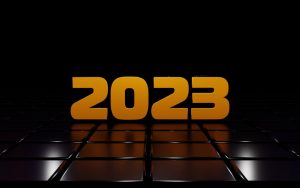The Dopamine Addiction Crisis: How Social Media Apps Mimic N…
Explore how social media apps are designed like narcotics to fuel dopamine addiction. Discover strategies to reclaim your focus today!
Introduction to Dopamine Addiction Crisis
The Role of Dopamine in the Brain
Dopamine is a neurotransmitter that plays a crucial role in how we feel pleasure. It is a part of the brain’s reward system and is released during activities that are perceived as enjoyable or rewarding.
This chemical messenger is essential for motivation, reinforcement, and the experience of pleasure, influencing various behaviors and emotional responses.
Social Media as a Trigger for Dopamine Release
Social media platforms are designed to maximize user engagement by leveraging the brain’s reward system. Features like notifications, likes, and shares are strategically engineered to trigger dopamine release, creating a cycle of reward-seeking behavior.
This continuous stimulation can lead to habitual checking and prolonged use of these platforms, as users seek the pleasurable sensations associated with dopamine surges.
The Addiction Mechanism
Similar to how narcotics manipulate the brain’s chemistry to create dependency, social media apps exploit the dopamine release mechanism to keep users hooked. The unpredictable nature of social media rewards—such as the sporadic likes or comments—mimics the variable reward schedules used in gambling, making the experience even more addictive.
This unpredictability enhances the compulsive nature of social media use, drawing parallels to substance addiction.
Consequences of Dopamine Addiction
The overuse of social media can lead to a range of negative consequences associated with dopamine addiction. Users may experience decreased attention spans, increased anxiety, and a diminished capacity to experience pleasure from other activities.
The constant need for digital interaction can also lead to social isolation and a decrease in real-world social skills, as individuals prioritize virtual interactions over face-to-face communication.
Addressing the Crisis
Tackling the dopamine addiction crisis requires a multifaceted approach. Raising awareness about the addictive nature of social media is crucial, as is promoting digital literacy and encouraging healthier online habits.
Developers and policymakers can play a significant role by creating and enforcing guidelines that limit the addictive features of social media platforms. Additionally, individuals can benefit from setting personal boundaries and engaging in digital detoxes to restore balance and reduce dependency.
How Social Media Apps Exploit Dopamine Response
The Science Behind Dopamine
Dopamine is a neurotransmitter in the brain that plays a crucial role in how we feel pleasure.
It is part of the reward system that reinforces behaviors necessary for survival, such as eating and socializing. When we experience something rewarding, dopamine levels rise, encouraging us to repeat the behavior.
Social media apps are designed to trigger this dopamine response.
By offering small, unpredictable rewards—such as likes, comments, or notifications—they keep users engaged and coming back for more.
Engineered for Engagement
Social media platforms are meticulously engineered to maximize user engagement. Features like infinite scrolling, push notifications, and algorithm-driven content feeds are deliberately designed to keep users hooked.
These elements exploit the brain’s natural reward pathways, creating a cycle of anticipation and reward.
The unpredictability of these rewards is key. Similar to slot machines, social media apps provide variable rewards that make it difficult for users to predict when they will receive a dopamine hit, thus encouraging continuous interaction.
The Role of Algorithms
Algorithms play a significant role in how social media apps exploit dopamine responses.
By analyzing user behavior, these algorithms curate content that is most likely to engage individual users. This personalized content delivery ensures that users are consistently exposed to stimuli that trigger dopamine release.
Moreover, these algorithms are constantly learning and adapting, becoming more efficient at predicting what will capture a user’s attention.
This creates a feedback loop that further entrenches the user’s engagement with the platform.
Psychological and Social Implications
The exploitation of dopamine responses by social media apps has significant psychological and social implications. Users may develop addictive behaviors, prioritizing social media interactions over real-world engagements.
This can lead to issues such as anxiety, depression, and reduced attention spans.
Furthermore, the constant pursuit of social validation through likes and shares can impact self-esteem and mental health. As users become more dependent on these platforms for emotional satisfaction, the line between genuine social interaction and digital engagement becomes increasingly blurred.
Impact of Dopamine Addiction on Mental Health
Understanding Dopamine Addiction
Dopamine is a neurotransmitter that plays a crucial role in the brain’s reward system.
It is often released in response to pleasurable experiences, reinforcing behaviors that are beneficial for survival. However, social media platforms have been engineered to exploit this system, providing constant stimuli that lead to excessive dopamine release.
This can create a cycle of dependency, where users feel compelled to engage with these platforms to receive a dopamine ‘hit’.
The Role of Social Media in Dopamine Addiction
Social media apps are designed to be addictive, using features like notifications, likes, and infinite scrolling to keep users engaged. These elements trigger dopamine release, similar to the effects of narcotics, leading to habitual use.
Over time, the brain becomes accustomed to these high levels of dopamine, requiring more frequent interactions to achieve the same pleasure, thus deepening the addiction.
Mental Health Consequences
The constant need for dopamine can have significant implications for mental health. Users may experience heightened anxiety and stress, as they become increasingly reliant on social media for validation and satisfaction.
This dependency can lead to a decrease in real-world social interactions, exacerbating feelings of loneliness and depression.
Moreover, the addictive nature of social media can disrupt sleep patterns, as users often engage with these platforms late into the night. Poor sleep quality is closely linked to various mental health issues, including mood disorders and cognitive impairments.
Long-term Psychological Effects
Prolonged exposure to the dopamine-driven cycle of social media can lead to long-term psychological effects.
Users may develop a distorted sense of reality, as they constantly compare themselves to curated and idealized versions of others’ lives. This can result in diminished self-esteem and increased susceptibility to mental health disorders such as anxiety and depression.
Furthermore, the constant need for instant gratification can impair the ability to focus and maintain attention, impacting productivity and overall cognitive function.
As users become more engrossed in the digital world, they may also experience difficulties in forming meaningful, offline relationships, further isolating them from real-world experiences.
Strategies to Break Free from Social Media Dopamine Addiction
Understand the Mechanics of Addiction
Recognizing that social media apps are designed to trigger dopamine release is the first step toward breaking free from their addictive hold. These platforms use notifications, likes, and endless scrolling to keep users engaged, similar to how narcotics create dependency.
By understanding these mechanisms, individuals can become more mindful of their usage patterns and the psychological traps set by these platforms.
Set Clear Boundaries
Establishing strict boundaries around social media usage can significantly reduce its addictive nature. This might include setting specific times for checking social media, using apps that limit screen time, or designating social media-free zones in daily life.
By creating a structured routine, users can minimize impulsive interactions and regain control over their digital habits.
Engage in Alternative Activities
Replacing social media time with fulfilling offline activities can help diminish its allure. Engaging in hobbies, exercising, or spending quality time with friends and family can provide alternative sources of dopamine and satisfaction.
These activities not only distract from the urge to check social media but also contribute to overall well-being and personal growth.
Practice Mindfulness and Digital Detox
Mindfulness practices, such as meditation and deep breathing exercises, can help individuals become more aware of their social media habits and the emotions driving them. Regular digital detoxes, where individuals take breaks from all digital devices, can reset the brain’s reward system and reduce dependency.
These practices encourage a healthier relationship with technology by promoting presence and intentionality.
Seek Support and Accountability
Breaking free from social media addiction can be challenging, and seeking support from friends, family, or professional counselors can be beneficial. Sharing goals and progress with others creates a support network that encourages accountability.
Joining groups or forums dedicated to reducing screen time can also provide motivation and practical tips from those who have successfully managed their digital habits.
FAQ
Q: What does it mean when social media apps are described as being engineered like narcotics?
A: When social media apps are described as being engineered like narcotics, it refers to the intentional design elements that these platforms use to trigger addictive behaviors in users. These elements include features like infinite scrolling, notifications, and algorithms that prioritize engaging content, all of which are designed to release dopamine in the brain, similar to the effects of addictive substances.
Q: How does dopamine play a role in the addiction to social media?
A: Dopamine is a neurotransmitter in the brain that is associated with pleasure and reward. Social media platforms are designed to stimulate the release of dopamine by providing users with likes, comments, and new content, creating a cycle of reward and craving. This cycle can lead to addictive behaviors as users seek out the pleasurable feelings associated with these dopamine releases.
Q: What are some signs that someone might be addicted to social media?
A: Signs of social media addiction can include spending an excessive amount of time on social media platforms, feeling anxious or irritable when not able to access social media, neglecting personal responsibilities or relationships in favor of social media, and using social media as a way to escape from reality or negative emotions. These behaviors can have significant impacts on mental health and overall well-being.
Takeaway
In conclusion, it is crucial for us to be aware of the addictive nature of social media apps and their impact on our mental health. Let’s take a step back and evaluate our usage patterns to ensure we are not falling victim to the dopamine addiction crisis. Remember, our well-being is paramount. Take control of your screen time, prioritize real-life connections, and seek support if needed. Together, we can combat this growing issue and strive for a healthier relationship with technology. Join the movement towards mindful social media usage today. According to a report by Bloomberg,











Comments